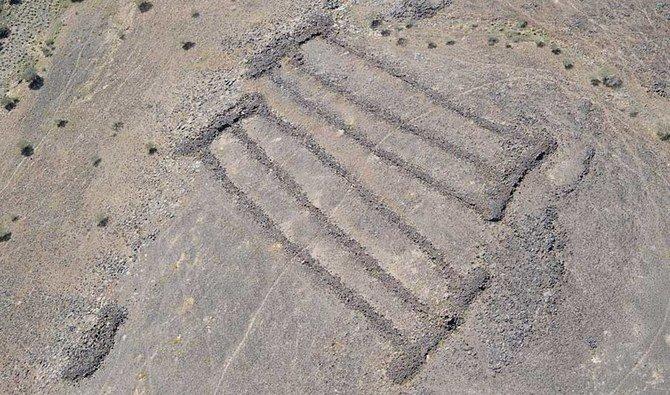Stone Structures Found in Saudi Arabia Predate Pyramids and Stonehenge

Image is for representational use only. Image Source: Arabnews.
In North-west Saudi Arabia, a vast site is home about 1000 stone structures, which date back more than 7000 years. This suggests that the structures found in Saudi Arabia predate Egypt’s pyramids and the Stonehenge of UK.
These structures are named mustatil, the Arabic word for rectangle. The mustatil structures were found back in the 1970s, but they received little attention from the researchers at that time. Hugh Thomas of University of Western Australia, Perth, and his team began to explore more about the structures and carried out the largest investigation on them.
The team used helicopters to fly over north-west Saudi Arabia, which was followed by ground explorations. The researchers found that more than 1000 mustatil structures exist in an area of 200,000 square kilometres. Commenting on the vastness of it, Thomas said, “You don’t get a full understanding of the scale of the structures until you’re there.”
The mustatils are made from piled up blocks of sandstone. Some of them weigh even more than 500 kilograms and they range from 20 meters to over 600 meters in length. However, their walls are only 1.2 metres high. According to Thomas, these structures were used to demarcate a space that needs to be isolated. The mustatils were not used to keep anything in, Thomas said.
The researchers found rectangular courtyards of long walls, where walls surround the central courtyard having a distinctive rubble platform or the head at one end with entryways opposite to it. some of the entrances were found to be blocked by stones. The researchers propose that this blocking indicates the entryways could have been decommissioned after they were used.
Their excavation showed that at one mustatil, the centre of the head had a chamber which contained fragments of cattle horns and skulls. The researchers suppose that the cattle fragments could have been presented as offerings. This suggests, mustatils could have been used for rituals.
The team conducted radiocarbon dating of the skulls and found that they date back to 5300 to 5000 BC. This is supposed to be the time when the mustatils were built. If this is true, then the monuments would be the earliest large scale ritual landscape in the world. It predates the Stonehenge by over 2500 years.
Commenting on the findings, one of the members of the research team, Melissa Kennedy, who is also from the University of Western Australia, was quoted to have said, “This could completely rewrite our understanding of cults in this area at this time; further south, religious groups became focused in homes, with families displaying small shrines, but the opposite was happening in ancient Saudi Arabia with the mustatils.”
There is also a possibility that a relationship exists between the construction of mustatils and the environment. These structures were built during the Holocene Humid phase. This is the period (8000-4000BC) when Arabia along with parts of Africa were wetter. These areas, which are now deserts were grasslands during that time.
According to Kennedy, droughts were prevalent during that time and it is possible that cattle herding was practised and some of it were used as offerings to god for protecting the place from changing climate.
The team also found that mustatils were clustered in groups of 2 to 19, which is suggestive that the gatherings were broken into smaller groups.
Get the latest reports & analysis with people's perspective on Protests, movements & deep analytical videos, discussions of the current affairs in your Telegram app. Subscribe to NewsClick's Telegram channel & get Real-Time updates on stories, as they get published on our website.














